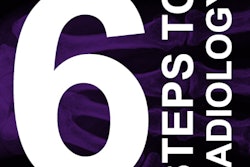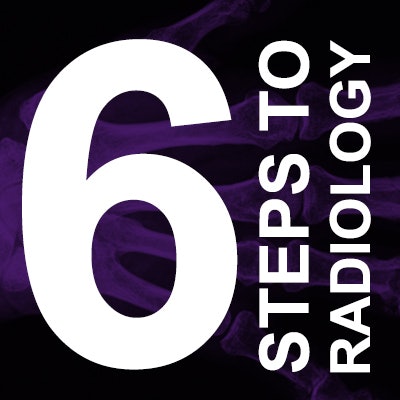
6 Steps to Radiology is a series of six articles that will run throughout the 2018-2019 academic year to help medical students find their ideal radiology residency program. It includes answers to common questions that radiology program directors and advisors have been asked; some advice reflects the personal opinions of the authors.
Now that it's August, it's time to stop procrastinating and start the Electronic Residency Application Service (ERAS) process in earnest. Many medical students find that getting started is the hardest part, and it is certainly a lot of work.
The first article in the 6 Steps to Radiology series focused on some of the components you need for your application packet. This article will further aid you in these areas, as well as detail where we recommend you focus your attention.
Curriculum vitae
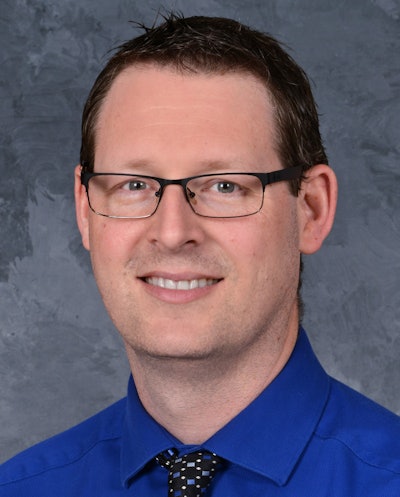 Dr. James Ireland.
Dr. James Ireland.Update your curriculum vitae (CV). The CV is intended to present your achievements for objective evaluation by a reviewer. There are no set rules for organizing a physician's CV, but there are expectations, and because radiologists are typically conservative, they prefer traditional formats.
Entries must be chronological. Chronological order (oldest to newest) is favored because it is easier to scan and read. Reverse order (newest to oldest) is often used because it positions your most recent, and usually most impressive, entries first. The choice is yours -- just be consistent.
Your CV must be free from errors and inaccuracies. Check your facts, spelling, and grammar. Clarity counts. Be sure to account for all time periods, even if what you did was not glamorous. Gaps in your work history and/or education make program directors nervous.
Planning and writing your personal statement
A well-written personal statement (PS) can set you apart from your peers and shine a positive light on your experiences and what you have to offer. While a poorly written statement can get your application rejected, an effective PS describes you and tells us why you are applying to radiology. It should show us the human behind the medical student and make us want to meet you.
Realistically, most personal statements are mediocre and probably have very little influence on the applicant's Match results. However, because the personal statement can have a negative effect, there are some things to focus on and others to avoid.
Write your statement honestly and do not include anything that is exaggerated or untrue. You very well may be asked about this information during your interviews, and watching you struggle to explain a lie is not something an interviewer wants to waste time doing.
Be sure to explain why you are choosing radiology and what you offer the specialty. This is your chance to illustrate your understanding of challenges facing the profession, as well as the exciting innovations on the horizon.
Begin educating yourself about the changes coming in radiology. You will also need to be aware of these for your interviews. If you have significant experience related to radiology, then mentioning that can be important.
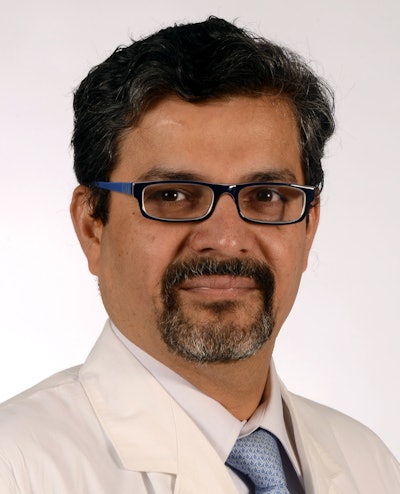 Dr. Kedar Jambhekar.
Dr. Kedar Jambhekar.Show creativity in your statement. Open with an attention-grabbing first sentence. Do not regurgitate your CV. Instead, focus on information that is not provided anywhere else in your application. Link things that make you unique or will help you stand out as a radiology resident. If you have a passion for playing sports, describe yourself as a coachable team player and tie it to the payoff of hard work and how you seek the same thing in residency. If you are artistic, your eye for detail may be particularly relevant to your future in radiology. Do this all on one side of one page.
There are things you should not mention in your personal statement. If you fantasize about seeing people cut up, do not mention that you feel radiology meets that need. Unfortunately, this has happened.
Avoid politically charged issues, even if they are all-consuming in your life. You may have a passion for helping women have access to abortion, but there is a good chance that at least one person at every site to which you apply will disagree. Program directors are not looking to increase the conflict around them, and they have to wonder how restrained will you be in person, given that you are so forthcoming on your application. You will discover that just as many great people disagree with your political viewpoint as agree with it. Why not find that out after you match?
You can submit a different personal statement for each radiology residency program you apply to, personalizing it some at the end. There is probably some minimal benefit to this. However, programs expect that you are applying to lots of other programs. If you are applying to interventional radiology and diagnostic radiology is your backup, be careful you don't offend either program.
Be aware, too, that your statement is a writing sample. One good tip is to read it out loud. If you stumble, revise and reread until it flows smoothly.
Letters of recommendation
Medical school gives you the opportunity to work with a large number of physicians across different specialties. This is generally the pool from which writers of your letters of recommendation (LORs) will be selected.
Unfortunately, many students fail to realize the significance of this until they are faced with finding someone willing to write an LOR. It is not enough simply to find someone willing to write for you. You do not want a weak letter or, worse, a negative letter. At least one of your writers should be a radiologist. It's a bonus if the radiology program director at your institution can write a strong letter on your behalf.
Once you've identified potential writers, schedule personal meetings with them. Show up on time and be prepared to discuss your interests and future goals. Leave a copy of your CV, your personal statement, and a photograph. A short autobiographical sheet with pertinent information such as GPA and step 1 score is appreciated. If you have a published manuscript or presented poster, provide the writer with copies. If there is anything specific you would like the letter to focus on, let the writer know.
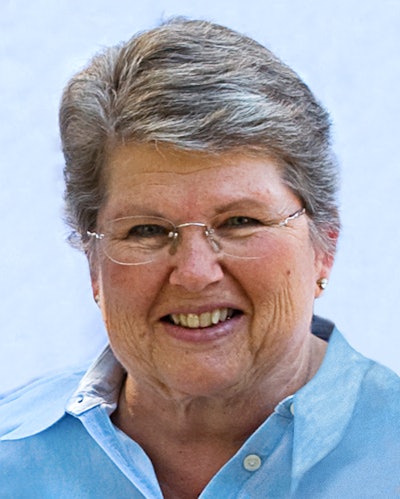 Linda Deloney, EdD.
Linda Deloney, EdD.Be prepared to say whether you want to waive (permanently give up) the right to read your letters. Some programs feel that letters are helpful only if rights are waived; others don't care one way or the other. But waiving your right usually sends a message that the writer was free to speak openly and without influence.
During the meeting, ask the person if he or she is comfortable writing you a strong letter of recommendation. If the answer is no, find another writer. Confirm that the writer will be able to meet the application deadline. If not, find another writer.
Writing LORs is an important faculty responsibility, but the quality and usefulness of letters can vary largely depending on the experience, style, and writing ability of the author. An LOR that places you on a pedestal, written by someone who knows you well enough to do so with confidence, requires significant time and effort. Be sure to say thank you, sincerely and often.
Making up for deficits in your application
Not everyone has the perfect application. Once your packet is assembled, critically evaluate yourself as an applicant and decide where your weaknesses are. Often, a deficit in one area can be strengthened by success in another area. A disappointing GPA can be countered by a high step 1 score. A research project can buff up a lackluster CV.
If you have a DUI or other infraction on your record, this has to be disclosed. Be upfront and honest about it. Trying to hide it or ignore it is an effective way to get your application rejected. Explain gaps in your education or work history. LORs will take on greater significance if they are specific to radiology and/or counter areas that are less impressive.
Selecting programs
Medical students pursuing radiology have steadily been applying to an increasing number of programs. This has a secondary effect of forcing programs to interview a greater number of applicants to fill the same number of positions, and it has decreased the likelihood that a program will match from its top-ranked candidates. The direct effects, however, are also significant. Each application choice will cost you money and time, and the amount increases as you accept interviews and make travel plans. Choose wisely!
So, to which programs will you apply? And how many? Identifying the programs depends on your answers to a few questions. You need to be brutally honest with yourself to find the best fit for you.
First, how competitive are you? High step 1 scores, Alpha Omega Alpha (AOA) membership, a great medical school GPA, research experience in radiology, impressive recommendation letters, and an exemplary dean's letter are all excellent testaments to your caliber as a future resident. Each one of these carries a different weight at each of the radiology programs throughout the country.
However, it is safe to say that past performance (in medical school and on step 1) is strongly correlated with success in residency and is therefore scrutinized by most programs.
Would you thrive in a clinical program or one that is more focused on academics (research)? While the Accreditation Council for Graduate Medical Education (ACGME) requires that all radiology residents meet minimum research requirements, the latter setting is going to offer more research opportunities. If research is your passion, then a predominantly clinical learning environment may not satisfy you.
Do you prefer a categorical or advanced program? Categorical programs offer a full five years at one location. A single move can be a huge benefit, especially for families. You can accomplish the same thing by matching into an advanced program and a transitional intern year at the same location. However, a transitional intern year may also be chosen at a different program, in another city or even another state. For the adventurous or those interested in experiencing a new part of the country without a long-term commitment, this may be ideal.
How big do you want the program to be? Programs can be small, taking up to five new radiology residents a year; medium, taking six to 10 new residents a year; or large, taking 11 or more new residents a year. The size of the program may be a general reflection of the number of staff members within the department.
Small programs are likely to be more intimate, and you will probably know your fellow residents well. Larger programs tend to be more academic and are more likely to be fellow-driven. There may be a trade-off in autonomy, but call responsibility may be less when there are more residents to share the load. Medium programs will vary and may share traits of large and small programs.
Medical students often struggle with knowing which program features will have a tangible impact on the quality of their residency education. Many things that medical students initially identify as highly important are later discounted as irrelevant or insignificant. And there is the danger of overlooking something that has real importance. Some things matter very little. Every program will brag about its MRI, CT, or PET scanners, but we all have them and could not offer a residency without them.
Some things matter to some degree. Moonlighting? This gets a lot of attention during the interview season, but a vast number of residents never choose to moonlight. Call? All programs will have a component of call. Ask about the schedule and supervision. Most residents remember their call experience as stressful, highly motivating, and highly educational. The greatest learning often takes place after the staff members go home. It is an important period of growth and maturity that fewer and fewer programs are able to offer. But a resident should never be left without a staff member to call about a difficult case or when in need of help, so ask about 24-hour coverage.
Some things matter a lot. Are residents happy? This is probably the most crucial factor to consider when evaluating a program. Are faculty members too busy to teach? Every program will be busy, but if it's all about the work, then it's not about education. Are residents given autonomy and allowed to make, or help make, decisions that will affect them? As employees, not all policy decisions can be made with their input. But residents are much happier when they can help craft the rules that they live by.
Ranking programs
It may feel too early to begin ranking programs. After all, you won't submit a rank list until late winter. But early ranking serves a purpose. Unless you are free from all responsibilities and have unlimited funds, you will have to choose where and when to interview once the invitations start coming.
Most applicants will receive more invitations than they can reasonably accept. It is common for applicants to accept all invitations early in the season and then cancel the less desirable ones as the more attractive offers roll in. Interviews at your lower-ranked institutions can be scheduled further out so they can be more easily canceled if needed.
I do recommend going to at least a few interviews at programs that might not seem to be your perfect choice. You may find a hidden gem of a program that will meet your needs much better than you think. If you schedule these early, you will also have the chance to practice your interviewing skills prior to your higher-stakes interviews.
Talk to the program director at your institution about ways to make your application more attractive. While most applicants to radiology do match, each year a few do not. If you are not very competitive, there are things you can do to improve your chances. Participate enthusiastically in a radiology interest group (RIG) if you can. If your school doesn't have one, start one. Listen to the faculty members and take their advice to heart. Have an honest conversation about whether you need a backup plan. Do not ignore the possibility of going unmatched and plan accordingly.
Summary
It is never too early to start the radiology residency application process. Every step will take longer than you expect. The more time and thought you put into your application, the more successful you are likely to be in making a good impression.
It is always a good idea to contact the radiology program director and coordinator on a regular basis to remind them of your interest and to keep you fresh in their minds. Many of us talk on a regular basis, and a good word on your behalf to a program you are interested in can go a long way toward ensuring an interview.
Finally, after the Match next spring, reach out to everyone who helped you with this process to thank them again and let them know how you did.
Dr. James Ireland is the assistant chair for diagnostic and therapeutic imaging services at the Central Arkansas Veterans Healthcare System. He has been associate program director of the University of Arkansas for Medical Sciences (UAMS) diagnostic radiology residency for four years. Dr. Ireland is fellowship-trained in body/MSK/cardiac MRI and also a veterinarian.
Dr. Kedar Jambhekar has been program director of the diagnostic radiology residency since 2012. He also serves as the associate program director for the DR-IR program and NuRAD (nuclear medicine-radiology dual certificate program). Dr. Jambhekar is chief of body/MSK MRI and outreach MR imaging for the UAMS Department of Radiology.
Linda Deloney, EdD, joined UAMS Radiology 15 years ago as the first nonphysician medical educator in a radiology department. She has a doctorate in higher education administration and more than 25 years of experience in medical education.




